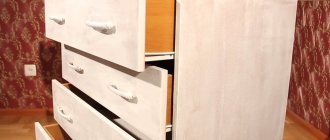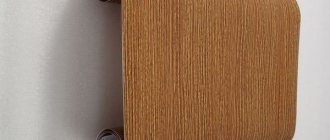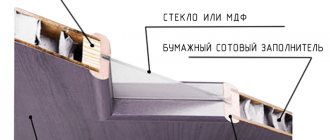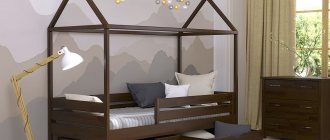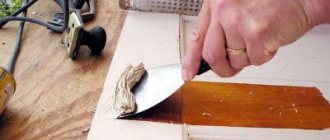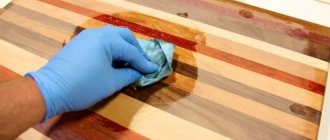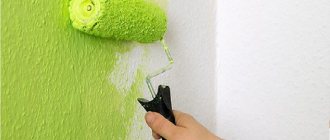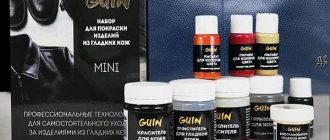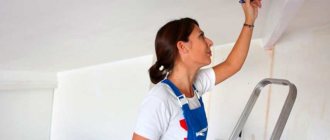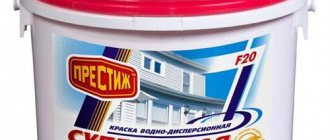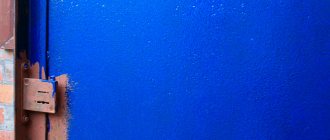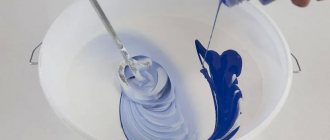Every modern designer knows what chalk paint is. Decorating furniture and interior items in the shabby chic or Provence style is especially popular. Using this material you can also simply update any piece of decor or furniture.
Chalk paint is also called chalk paint (perhaps because the finished surface has a pleasant dullness, similar to chalk. Why is this material so popular and everyone wants to know the recipe for homemade chalk paint?
- Firstly, this material is quite resistant to mechanical stress (subject to proper surface preparation);
- Secondly, the surface is velvety and pleasant to the touch;
- Thirdly, you can paint any surface (wood, metal, and chipboard);
- Fourthly, you can make chalk paint yourself using regular store-bought paint.
- Fifthly, with the help of color you can get any shade.
Depending on the components added, the surface can be either smooth or textured. And this quality can be varied by decorating different surfaces. Also, using a chalk composition, you can get a slate surface on which you can draw with chalk.
Chalk Paint Recipes
Some people prefer to buy ready-made chalk paint, but every designer should still be able to make chalk paint at home, especially since it is not difficult. We found several recipes containing different ingredients.
Please note: when making homemade chalk paint, look at the finished consistency, since the base (paint) and the additional components themselves are different for everyone, from different manufacturers, and have different properties (thickness, whiteness, drying time).
Using soda
One of the budget options, since all components can be purchased at any store. The peculiarity of this recipe is the resulting rough surface, since soda does not dissolve and acts as an abrasive. Depending on the desired result, the surface can be left grainy or sanded.
The method is quite simple: soda is gradually added to latex paint and everything is thoroughly mixed. If necessary, you can dilute it a little with water. The following proportions are usually used:
- 1/3 part sodium bicarbonate;
- 2/3 parts latex paint;
- water if necessary.
To ensure that the soda is evenly mixed with the base, it is better to use a construction mixer for mixing. For complete coverage, the surface is coated with three layers of paint. This option is very popular among needlewomen for decoupage work.
Using gypsum
Instead of plaster, it is allowed to use ordinary putty. The only point: depending on the manufacturer, the finished paint dries either faster or slower, so it’s worth preparing a small portion first and trying it out. And of course, the cost of ready-made paint will depend on the price of plaster or putty.
The texture of the painted surface is matte and velvety, but if the paint is not well mixed during production, roughness may form on the surface that will need to be sanded. What to take for homemade chalk paint with plaster:
- one part of plaster or putty;
- three parts of wall paint (preferably latex);
- water (required).
Unlike the previous method, in this version the use of water is mandatory; it is with it that we first stir the plaster, and then add paint. It is also better to stir with a construction mixer. The consistency of the finished paint should be similar to thick sour cream.
Keep in mind: gypsum-based material hardens quickly, but the mixture can be diluted with water during the painting process.
A minimum of two coats is required for full coverage.
With corn starch
Another inexpensive ingredient that can be used to make chalk paint is food starch from corn. The texture turns out to be a slightly rough surface that will need to be sanded. But the quality of the paint is in no way inferior to industrial paint. To prepare the coloring material you will need:
- one third cornstarch;
- two thirds latex paint;
- water;
The principle of preparation consists only of mixing all the ingredients; the only question that may arise is: how much water to add? Water is added to the mixture of starch and paint, it only dilutes the resulting mixture. Therefore, you need to pour in as much as the desired consistency requires.
To avoid bald spots on the surface, paint will have to be applied in at least two layers.
With calcium carbonate
One of the most expensive options among those listed. But the quality of the finished paint is an order of magnitude higher than the rest: the surface is matte and smooth, not requiring sanding. It is this recipe that is popular for painting furniture and decorative items. For preparation you will need:
- two parts of latex paint as a base;
- one part calcium carbonate;
- water.
As in previous methods, first mix the paint and carbonate, then add water if necessary. The consistency should be thick sour cream that spreads easily onto the surface.
One more question remains: where can I buy calcium carbonate for making chalk paint? Most often it is sold either in chemical stores or in pharmacies (price at the time of writing: from 100 rubles per 100 g of calcium carbonate CaCO3 powder).
For a high-quality coating, two layers are enough.
With tile grout
A more budget-friendly option is obtained using tile grout (for example, ceresit), but again, it all depends on the properties of the specific grout mixture. Most often, proportions similar to the previous recipe are used:
- one part of the grout mixture;
- two parts latex paint;
- water.
For dense coverage, two layers of application are sufficient. The surface is also quite smooth and does not require sanding.
Features of the material
Ready-made chalk paint can be bought at hardware stores, but it is much more convenient and profitable to prepare such a composition yourself.
Most often, the cans indicate that the surface does not need preparation, that is, there is no need to remove the old coating, putty or prime. But, as practice shows, the paint will not always stick and adhere well. Therefore, at least minimal preparation will have to be done.
The most important requirement for the surface to be painted: it must be cleaned of dirt and dust, and degreased. If we are talking about laminated furniture, then at a minimum you will have to wipe it with gasoline or a soap solution (possibly with dishwashing detergent). If a wooden base is to be painted, then you will also have to putty all the existing depressions and flaws.
Before you decide to remodel furniture using chalk paint, it is worth studying some of the features of its use:
- The paint itself dries very quickly, so you will have to work at an accelerated pace;
- After drying, the surface can not only be wiped with a damp cloth, but also washed;
- The material is considered fireproof and can be used for painting walls or furniture in any room;
- Despite the paint’s resistance to abrasion, it is still afraid of strong mechanical influences: just like any other, the surface can be scratched by sharp and hard objects;
- After painting, it is better to protect the surface with wax.
The most popular use of chalk paint among designers is to give antique effects to furniture, doors and other interior elements. For complete coverage, paint is applied in at least two layers, or even three.
Middle Earth Map
Hey guys! There was a case, I decided to try to make a map of Middle-earth. I came across photos of the process and decided to show them.
Manufacturing. 1.) First, I found the map itself on the Internet. A large format is needed so that, if necessary, small details can be clearly seen. Then I lined the downloaded map into squares in . Or I just applied a grid, I don’t remember, but the point is to create small, identical sectors. Then I took an A3 sheet of paper and lined it into the same number of squares. It turned out something like this:
It’s hard to see because the lines weren’t pressed in; they shouldn’t be noticeable at the final stage.
2.) Then everything is simple - sector by sector I began to transfer the image from the source to paper. This task is quite painstaking and somewhat tedious, and the pencil also makes your fingers numb. =)
There is a difference in the colors of the photos because there is no flash on the phone and I didn’t think to get an additional lamp. What can you do? You can’t rewind time, so things turned out the way they did.
This took me a couple of evenings. I couldn’t sit much, but I spent an hour or two.
3.) Next we needed to add colors. I didn’t think for long and decided to use tea. First, I tried it on a separate piece of scrap paper, applied layers, and then finished it off with a clean copy.
Apply five layers using a cotton swab. The tea is very strong, almost 1 to 1 brewing with water. In those areas where the water (sea, lakes) made tea with mulberries separately, it gave a bluish tint.
Of course, I had to work with the edges of the sushi using brushes and cotton swabs. After each application, it is important to dry the sheet very well, otherwise there is a chance of tearing off the layer of paper with cotton wool. This also took a couple of days. =)
4.) The most difficult and time-consuming part for me was the stage of drawing the pencil sketch. I took a helium pen and quietly, again square by square, mountain by mountain, began to draw the details. There are no photographs of the process left, but this procedure dragged on for four days, I don’t remember exactly. =) And as a final step, I took an eraser and erased all traces of the pencil. I must say, after all the manipulations, most of it was erased. Well, as a result.
Paint application area
This product can be used to paint products of various structures: fabric, PVC, metal, wood, coated with construction plaster mixtures. The scope of application of “industrial” and “home” samples varies. The first ones are used for:
- applying drawings to the surface of vehicles;
- creating visual compositions with a variety of colors on fences, fences, asphalt and tile surfaces in the city or in the country;
- images of temporary signal, sports, and road markings;
- forming marks and inscriptions on the floor of production premises and construction sites.
Chalk paint for furniture
It has been known for many years and was previously used to paint walls and ceilings. Today, the popularity of such products has returned, however, their character and fate are completely different.
Nowadays, people increasingly want to buy chalk paints for furniture. They represent a new generation of products with a very wide range of applications. Most often they are used for furniture restoration, decorating fabrics and upholstery.
DIY chalk paint for furniture
Each of us knows the value of chalk paint. But you can do it yourself. How to make chalk paint for furniture? It is not difficult!
Composition of chalk paint for furniture:
- water;
- dental plaster;
- jar;
- a small diameter stirrer that will fit into the jar;
- any acrylic paint (not to be confused with acrylic emulsion);
- spoon.
Chalk Paint Recipe for Furniture
- Pour gypsum into a vessel of any container (you can take a liter jar) to 1/3 of the volume.
- Carefully add water, mixing thoroughly with a spoon so that there are no lumps. The mass should be thick, thicker than thick sour cream. You can also mix with a stirrer.
- Pour acrylic paint to the top. Mix again, collecting all traces of gypsum from the sides of the jar, stirring all the lumps. This time, the consistency should be like thick sour cream with 30% fat content.
Before use, it is worth conducting a test on a small, inconspicuous area of furniture.
Types of graphite paints
The slate mixture is produced and sold in sprays and in liter jars, which require uniform application with a roller or brush. The first option in the form of a spray allows you to use the composition sparingly, since its layer is very thin and uniform over the entire application area. However, when you need to decorate a small section of the wall, hard-to-reach places, you should use paint in a can and a brush.
Chalkboard paint is not just a black base like on a drawing board. Depending on the type of this mixture, there are chalk compositions, magnetic slate and slate.
Cretaceous
Chalk slate consistency is a special composition of a mixture of slate base, which, after drying, becomes rough and matte, suitable for drawing with crayons. Advantages:
- A solid base for repeated crayon drawing.
- Environmentally friendly components.
- Fire safety.
- Erasing the inscriptions is easy, using water or a sponge.
Chalk paint is applied to a flat, ideal wall surface that has been pre-treated with plaster or putty. The composition has the best adhesion to wood, cement and concrete. The grip on metal is a little worse.
Magnetic slate
Magnetic slate mixture is the use of slate paint coated with a magnetic base. An innovative coating that recently appeared on the market has the ability to hold magnets and apply designs with special markers. Such characteristics are ensured due to the presence of metal chips in the mixture, which does not create a magnetic field, but only closes the magnetic lines.
They paint a plastered wall, a wooden base, plasterboard, and less often metal and ceramic elements with a magnetic slate composition. The hardened coating is suitable for drawing, attaching magnetic educational elements in a child's room, drawing recipes in the kitchen, and reminders in the hallway. The coating is highly resistant to moisture, resistant to mechanical damage, and resistant to direct sunlight.
Slate
Chalkboard mixture is the same composition that is referred to as chalk coating. Its surface is matte, smooth, suitable for repeated drawing with crayons. It is noteworthy that it is not necessary to buy such a composition in a store, since it is possible to make such paint yourself from inexpensive components.
DIY slate or magnetic paint
The price of unique coloring compositions from well-known manufacturers is quite high.
For example, for 1 liter from 600 rubles, in an aerosol such a composition will cost 700 rubles for 400 ml. But, there are options on how to make such a mixture with your own hands, spending three times less money. Preparing slate paint:
- 1 liter of acrylic paint + 8 tbsp. spoons of dry cement.
- Mix everything until smooth without lumps or bubbles.
- Apply to a flat surface.
Preparation of magnetic chalkboard paint:
- Acrylic paint 1 liter + sifted metal chips 8 tbsp. spoons
- Mix everything and apply to the required area of the surface.
Applying chalk paint to a wooden surface
After the prepared surface has completely dried, apply paint. Apply the first layer with long strokes. The first layer should dry within an hour. The next layer can be applied with a brush or roller. It depends on your preference. Apply the third and subsequent layers if necessary. With complete drying between layers. Drying should be natural. There is no point in speeding it up by any means, such as a hairdryer. This can lead to paint delamination.
Varieties of CM
Chalk paint was first used in 1990 by a British designer. It went on sale under the Chalk Paint brand. The recipe remained secret. Therefore, specimens have been developed that contain different constituent elements. They are all water based and differ in additives. The name of chalk paint depends on them.
- Natural and synthetic resins are found in resin dyes.
- Silicates are mineral constituents.
- If casein is added, then it is milk paint.
- Flax oil is contained in the oil composition.
Painting creates a smooth or embossed layer. On the first one you can draw. The core of textured or slate CM is acrylic, silicone, latex emulsion.
In order for the slate coating to have the properties of a magnet, metal particles are introduced into the latex composition. Magnetic dye interacts with any material.
The chalkboard effect is created by emulsions of dark shades. In this case, chalk patterns are visible on the surface. Manufacturers have developed colorless formulations. The pigment of the desired color is introduced and converted into a colored slate board.
Mother-of-pearl composition is used to decorate walls and interior items. The ceiling is painted white. You can use the ready-made whitewash composition or prepare it yourself.
The base that comes into contact with fire is coated with fire-resistant paint. To secure the decor, the product is fired with fire. In both situations, chalk compounds are used that can withstand prolonged temperature exposure. They belong to heat-resistant materials. This group includes stained glass paints for painting glass and ceramics.
What is slate paint and what are its features?
The designers made such a practical decision in interior matters. They were the ones who thought, why not paint a fragment of the wall or an entire part with it. You can leave sketches on it, and it is also a great solution for families with little artists who love to draw on vertical surfaces. School boards are painted with graphite paint, and manufacturers have long been producing different colors of this type of paintwork material.
You can leave sketches on it, and it is also a great solution for families with little artists who love to draw on vertical surfaces.What's included
The main component of the coloring composition is latex. The paint dissolves well in water. Additionally, the composition includes other natural substances that provide high wear resistance after complete drying. This can be marble chips, dolomite, cement, gypsum, acrylic or other modifiers.
The main component of the coloring composition is latex.
Advantages and disadvantages of the material
The main positive point is that the coating is absolutely harmless after drying. Therefore, paints and varnishes can be freely used for painting surfaces in schools and children’s rooms. It also has a number of additional advantages:
- High water resistance characteristics;
- Graphite wall paint is non-flammable and has sufficient fire resistance;
- The absence of toxins characterizes it as an environmentally friendly product;
- After drying, it does not emit any sharp, unpleasant odors;
- The paint is ideal for chalk on the wall, as after drying it creates a matte surface;
- Good level of adhesion. Sketches and other drawings, inscriptions on it do not fall off;
- Perfectly masks small imperfections on the surface.
Among the disadvantages is the high cost of the product, and there are also some points that do not allow its use.
The main positive point is that the coating is absolutely harmless after drying.
What to paint under the slate
Chalkboard paints can be used throughout the home:
- In the nursery. If you install a large board here or paint over an entire wall with chalkboard, children will have a place to create and learn. And the rest of the walls in the house will be completely safe.
- In the kitchen.
Individual slate boards, kitchen aprons, and painted kitchen cabinet doors look very nice here. You can write down recipes, menus, reminders, shopping lists, and just declarations of love for each other on them. Important! Some paints become discolored by hot grease, so they should not be applied near a stove. - In the hall. It is convenient to leave messages at the front door for family members about what they need to do or take when leaving the house. And next to the landline telephone, a slate panel will replace a notebook.
- For decorating individual items. Slate kitchen trays, cutting boards, large dishes, tags on jars of cereals and flowerpots with seedlings, etc. look great.
A variety of materials can be painted to look like lead:
- wood, chipboard, MDF, fiberboard;
- metal;
- plaster;
- drywall;
- brick;
- glass;
- ceramics.
Slate paints have found their application not only in school classrooms, but also in apartments, cafes and other public institutions. All slate paints are intended for interior work. They do not tolerate low temperatures.
Advantages and disadvantages
The advantages of chalk dye are the following aspects:
- the composition is environmentally friendly and safe for humans;
- the coating is resistant to abrasion, water and some household products (soap, dish soap, neutral gels);
- the filler ensures the fire resistance of the layer, and the base provides its antiseptic and adhesive properties;
- There are no sharp or unpleasant odors during the drying process;
- chalk finish is suitable for all types of premises (high humidity may reduce the service life of the paint);
- slate coating adheres well to most materials and in most cases does not require special preparation;
- creating an impromptu board allows you to diversify the interior and get a convenient place for notes.
The disadvantages of the material include:
- high price of professional paint;
- vulnerability to low temperatures;
- long drying and curing;
- the need for preliminary plastering in the presence of potholes and other defects.
How to make a slate board for writing and drawing with chalk
Almost all young children love to draw, often using the floor, walls and pieces of furniture as a “canvas”. Taking into account the needs of their child, resourceful parents make certain adjustments to the home interior, using special paint, which is easy to apply and just as easy to remove. chalk. In this case, it is not at all necessary to paint an entire wall or cabinet.
A small chalk board, which can also be useful for adult family members, if you use it, for example, for notes and reminders about important matters, is quite capable of satisfying a child’s creativity.
Spray chalk paint
Chalk paint is also available in spray form. It is easily washed off the surface with soapy water. The aerosol allows you to apply the composition without fear that it will flow or smudge.
The color range includes more than 10 shades, including neon colors. The composition freezes at temperatures below 24 degrees Celsius.
Aerosols are most often used:
- painting a car - this can be done for any celebration; a rented car is also often painted in this way;
- temporary graffiti - makes it possible to change the appearance of houses and cars at least every day;
- applying warning signs - such aerosols are often used by activists of the StopHam movement and other similar movements.
It’s worth mentioning separately about advertising signs: they look bright and attractive, and you can change them according to your mood.
The best manufacturers
The best manufacturers of chalk waterborne paint are Craft Premier, Siberia, Tikkurila, Rust Oleum, Magpaint and Benjamin Moore. Products from Magpaint, Siberia and Magnetico make it possible to impart magnetic properties to the coating.
Siberia
Siberia is a Russian brand of paints and varnishes. Marker, chalk and other types of paints are produced under it. They contain antiseptics, modifiers to increase strength and bright pigments.
The brand has the most favorable price-quality ratio.
Magnetico
Magnetico is a German manufacturer of special primers and dyes. The coating holds magnetic figures well and is abrasion resistant. The disadvantages are the cost and narrow palette.
Tikkurila
Tikkurila is a Finnish brand that is distinguished by a wide range of shades, high resistance and average finishing price. When applied correctly, the board or wall will withstand up to 5,000 painting and cleaning cycles.
Magpaint
The paint manufacturer Magpaint is located in the Netherlands. In addition to classic slate products, it produces marker and magnetic finishes. The finished layer withstands mechanical damage and washing well.
Craft Premier
Craft Premier is considered the leader among Russian paints in terms of abrasion resistance. According to the manufacturer, the coating can withstand 10,000 drawing cycles. To work with small objects and restore areas of slate, you can purchase brown or black pigment in a small jar.
Rust Oleum
American Rust Oleum paints are available in both liquid and aerosol form. The latter allows you to work with small souvenirs and hard-to-reach places on furniture and walls. The cost of painting with this product is higher than that of Russian and European brands.
Benjamin Moore Co
Benjamin Moore Co belongs to the premium segment of the market. This finish is resistant to damage and has a wide range of shades, but painting a large surface will not be cheap.
Cooking recipes
Most often, the basis for homemade paintwork is ready-made acrylic or latex paint for interior work (interior). To provide the product with the desired matte effect, a filler is introduced into it, the role of which can be played by various substances.
Recipe - basic
The most popular is a composition based on 2 parts latex paint and 1 part calcium carbonate (pure calcium carbonate). First, calcium carbonate is diluted with hot water until a creamy mass without lumps is obtained. This mass is allowed to cool completely. Meanwhile, color is added to the latex paint, mixed and a calcium carbonate-based paste is added. If this substance is not available, tooth powder can be used instead, but with large volumes of production, the cost of coatings will increase significantly.
Calcium Carbonate for Chalk Paint
Recipe - with putty or building plaster
Prepare ¾ part latex or acrylic paint and ¼ part gypsum or dry gypsum putty for walls, as well as water. Gypsum is diluted with a small amount of liquid to form a thick paste. Add the mixture to the tinted paint; if necessary, dilute the mixture with water. The coatings are mixed well and application begins immediately, since the gypsum hardens very quickly.
Recipe - with soda
The most inexpensive and accessible option for making a chalk composition is to mix 2/3 parts latex material and 1/3 parts soda. In this case, you can combine soda directly with the paint without diluting, since it dissolves well and practically does not form lumps. To obtain the composition of the desired consistency, it can be diluted slightly with water.
Recipe No. - with tile grout
It is beneficial to prepare such a product if there is still unnecessary grout left after laying the tiles. Take 1 part grout and 2 parts latex paintwork, mix thoroughly and use as intended. If the mass turns out to be thick, dilute it with water.
Grout for tile joints
Recipe No. - with cornstarch
For 2/3 of the finished acrylic (latex) paint, take 1/3 of the starch. The components are mixed and beaten with a construction mixer, gradually adding water until the desired consistency is obtained.
Components for preparing chalk CM
The main component is a ready-made composition based on acrylic or latex (“Star”). In most cases it is acrylic material. It is the core for all types of chalk compositions.
- The filler creates the bumpiness of the coating. The following are used: stone chips, quartz dust, synthetic fibers and other components that can create relief on the surface. The size of the particles used is taken into account: coarse filler up to 2 mm; medium particle size – up to 1 mm, fine-grained crumb – less than 0.5 mm.
- To prevent the acrylic base from drying out quickly during work, which is not always good for decoration, a drying retardant is introduced into the solution.
- To enhance the tenacity of the chalk dye, a fixative is added to the base. It increases the chalky effect of the base.
- Putty, gypsum, and grout can increase the resistance of the coating to mechanical stress.
- The solvent achieves the desired viscosity of the material. For acrylic and latex, the solvent is water.
Chalk dye can be applied with any painting tool. The choice depends on the viscosity of the dye.
"Secrets and mysteries" of homemade chalk paint
On the Internet you can find a lot of different “recipes” of chalk paint . On soda, starch, calcium carbonate, tooth powder, talc, grout, kaolin, alabaster, cement, gypsum, clay, Paris of plaster and many other “secret” ingredients. But when you happily come home with a jar of the treasured microcalcite powder, add it to the acrylic paint as you were told in the “video instructions”, strictly observing the proportions of 1 to 2 or even 1 to 3. Apply the first layer and see that no magic happened and that it wasn’t chalk paint. You try to adjust the “recipe” yourself by adding another spoonful of some secret ingredient to the jar of experimental chalk paint. Apply - and again everything is wrong. Then a week later, after scouring the Internet, you find a recipe for something else. You make a second attempt - and again it’s not the same. Disappointment again.
Tips for making material
Chalk paint itself is durable and flexible, so you can even buy inexpensive latex or acrylic compounds to make it. In order for the result to please you, you must strictly follow the proportions of the components indicated in the recipes. If the dosage is violated, the mixture may not meet the specified properties - it will roll or clump, or it will be too liquid.
If the paint filler has a gypsum base, then the finished material must be used as quickly as possible, since it cannot be stored. You only need to prepare the paint for one time. Before painting furniture, it is better to make a test portion of the product and apply it to a small area to accurately assess the color and the resulting effect.
Scope of application of chalk paint
Chalk paint is a building material for modifying wooden, metal, leather, fabric and other surfaces.
Important! If you have no experience working with chalk paint, it is recommended to consult a specialist before choosing a building material. An incorrectly selected option can ruin your mood and distance you from your desired goal.
Chalk paint for fabric
You can protect the fabric surface from rapid contamination, abrasion and other types of damage by covering the fabric with chalk paint and wax. When applying paint, it is important that it saturates the fabric. If the matter is structural, the impregnation time will increase slightly.
Dyeing the fabric using a spray bottle will help speed up the process. The step-by-step process looks like this:
- Chalk paint is diluted with water according to the manufacturer's recommendations;
- The product is applied to the fabric surface in 2 layers, the interval between each is 60 minutes;
- After a day, the surface is covered with wax using a brush.
Carefully applied wax emphasizes the depth of the color shade and makes it more pronounced.
Important! Before using furniture, make sure the surface is completely dry. Deep stains of paint remaining on it are a defect and can ruin the wearer's clothing. For these reasons, if you lack experience, you should entrust the work to professionals.
Chalk paint for art painting
Modern materials are used both for decorating furniture and other antique surfaces, and for artistic painting. If there are boring accessories in the house, a user with imagination can give them a second life.
The correct use of abilities will make the furniture unique and emphasize individual style. Hand-painted furniture is valued on the market for goods and services; its cost is no cheaper than rare options.
Useful tips
Painting and subsequent drying of the surface must take place in a room with a certain microclimate, the air temperature must be at least 10°C, and the humidity must not exceed 85%. After 24 hours, the surface with a slate effect must be treated with calcium carbonate chalk, rubbing it in with soft circular movements.
The painted surface can be used no earlier than after two days. It is necessary to wait until the layer is completely cured. When preparing the composition for painting a surface, you need to correctly calculate the consumption. Textured paint has a higher composition consumption compared to slate paint. To paint 1 m² you need at least 600 g.
Watch the following video for a master class on the recipe for the smoothest chalk paint with your own hands.
Examples of works using chalk paint
Subscribe to our channel
You might be interested 06/30/2021 How to treat the surface of plywood to look like velvet 03/04/2021 Do-it-yourself table made from furniture panels 07/16/2020 For that kind of money, a Russian carpenter won’t even pick up a board 05/18/2020 Wood engraving pen for 141 rubles 04/03/2020 How to fix a swollen tabletop
Tags
homemade chalk paintabout chalk paintessence of chalk painthomemade chalk paint.by chalk paintabout chalk paintcreation of chalk paintoriginal chalk paintchalk paint chalk paint verychalk paint had paint.chalk paint had paint forsmelling paints to paintacrylic paint peels off.chalk paint yachalk paint belongs to chalk paint.Latex paint yalatex paint for clumping paint dilute chalk paint Chalky Paint Chalk Paint Chalk Paint.Chalk Paint.
paintfinishsource
